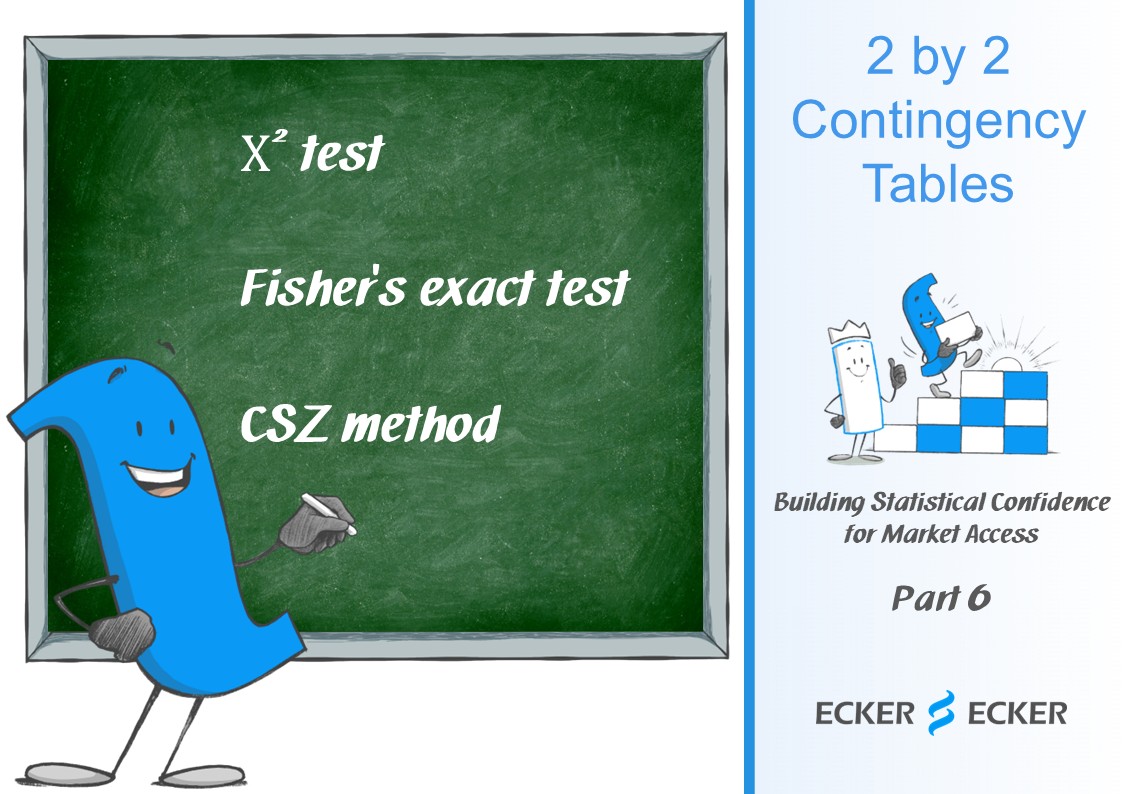2 by 2 Contingency Tables

When analyzing clinical data for HTA we often consider binary attributes: Does the patient have a certain illness or does he not? Did he have an adverse event or did he not? Did the quality of life improve or did it not? In this context 2 by 2 contingency tables are a useful tool.
Advantages
➕ Clarity – It gives you a simple and clear overview of your data.
➕ Simplicity - It allows you to easily compute important values like odds ratio, risk ratio and risk difference.
Challenge
⚠️ Small Number of Observations – This can lead to problems, especially if some entries in the table are zero.
Statistical Methods to Test Difference in 2 by 2 Tables
📊 Χ² test – A simple and widely used method to determine the independence of two attributes.
📊 Fisher's exact test – The way to go when the requirements of the Χ² test are not fulfilled.
📊 CSZ method – Also widely known as Barnard's test. Works especially well in the case of zero cells.
Fisher's exact test vs. CSZ method
There is discussion about the question when which method is most suitable. The methodological difference lies in the assumptions on the marginal sums.
➕ Advantage Fisher: easy to understand, fast to compute and controls the first error rate.
➕ Advantage CSZ: higher power, especially when assumption of fixed margins is violated.
In general Fisher's test is widely used, the IQWiG prefers the CSZ method.
📢 Learn more about how to solve the problem with small numbers of observations when calculating effect measures out of 2 by 2 tables in our next post on building statistical confidence!